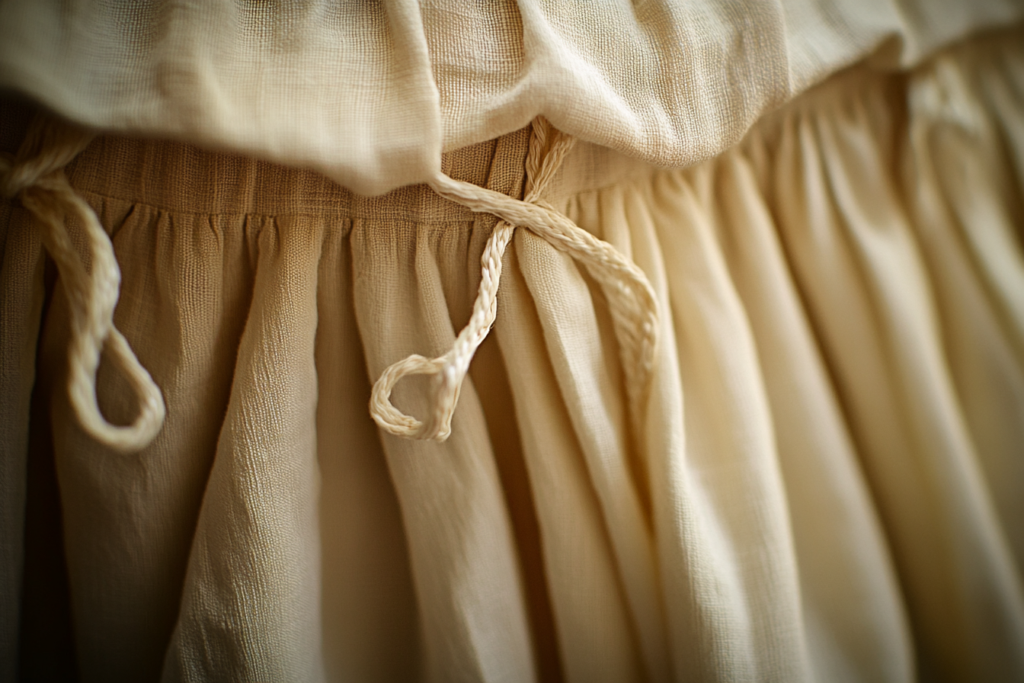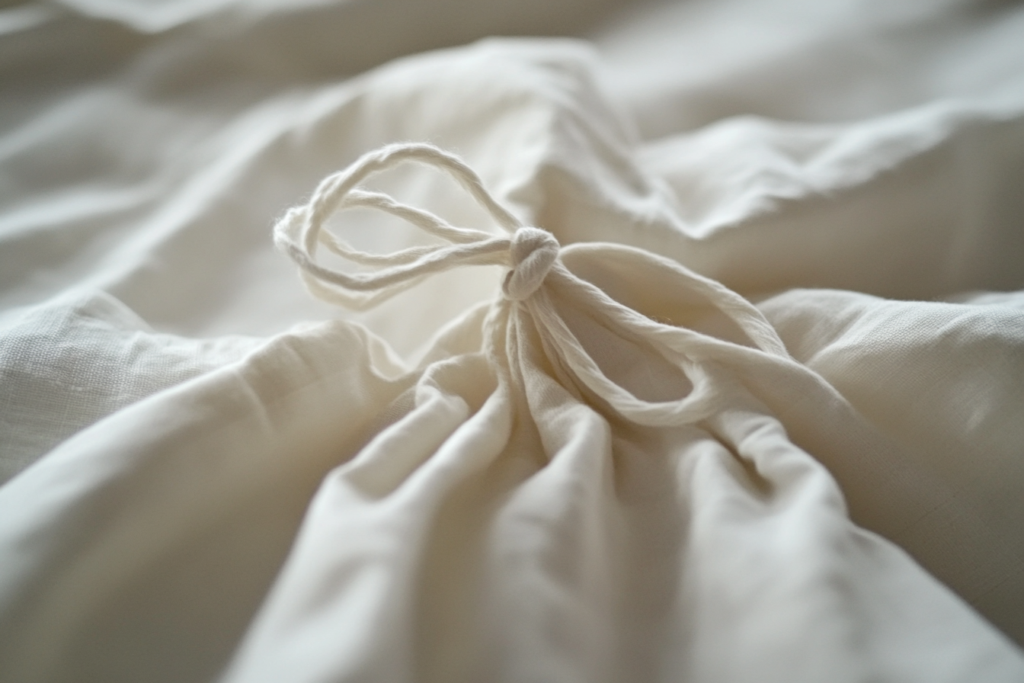Shirring: The Elegant and Functional Technique in Fashion
Meta Description: Shirring is a fabric-gathering technique that creates a soft, structured effect in garments. Learn how it replaces darts, enhances shaping, and adds detail to cuffs, waistbands, and more.
What is Shirring?
Shirring is a gathering technique used in garment construction to manage excess fabric and create soft folds. Unlike structured pleats or darts, shirring consists of at least two rows of parallel pleats, providing a gentle and elastic effect that shapes the fabric while maintaining comfort.
Shirring is commonly used in local areas of a garment, such as cuffs, waistbands, bodices, and sleeves, to create a fitted yet flexible design. It serves as a subtle alternative to darts, shaping the fabric without rigid structuring.


Key Features of Shirring
✔ Soft & Flexible Fit – Provides shaping without stiffness, allowing natural movement.
✔ Decorative & Functional – Adds texture and gathers fabric while ensuring a better fit.
✔ Replaces Darts – Achieves a tailored look without using darts, which can sometimes appear too rigid.
✔ Elasticized Effect – Often combined with elastic threads for stretchable shirring, enhancing comfort.
✔ Versatile Application – Used in cuffs, waistbands, necklines, and even full bodices for a ruched look.
Where is Shirring Used?
📌 Cuffs & Sleeves
- Shirring at the cuffs creates a gentle, gathered effect that replaces darts, adding a decorative yet structured finish.
📌 Waistbands
- Helps create a fitted silhouette while allowing flexibility in movement. Often seen in skirts, dresses, and blouses.
📌 Bodices & Dresses
- Provides a soft, gathered effect at the bust or torso, adding dimension and texture to the fabric.
📌 Necklines
- Adds a feminine, ruched detail that enhances style and provides ease in fit.
📌 Full-Length Garments
- Used throughout a garment to create a smocked or ruched effect, as seen in bohemian-style dresses and summerwear.
Shirring vs. Other Fabric Treatments
| Technique | Function | Common Uses |
|---|---|---|
| Shirring | Gathers fabric with multiple rows of stitching. | Cuffs, waistbands, bodices, necklines. |
| Pleating | Folds fabric into structured pleats. | Skirts, trousers, blouses. |
| Darts | Tapered seams used for shaping. | Bodices, bust areas, fitted tops. |
| Ruching | Decorative gathering for visual interest. | Evening gowns, draped dresses. |
| Smocking | Hand or machine embroidery that gathers fabric. | Children’s wear, vintage styles. |
Benefits of Shirring
✅ Enhanced Comfort – Provides a snug fit without restricting movement.
✅ Versatile & Stylish – Works for both casual and formal wear, adding soft structure.
✅ Easy to Maintain – Requires minimal ironing and holds its shape over time.
✅ Elastic Adaptability – Shirred garments naturally adjust to body contours, making them more size-friendly.
How to Create Shirring in Sewing
Step 1: Mark the area where shirring is needed using chalk or fabric markers.
Step 2: Set up the sewing machine with elastic thread in the bobbin (for stretch shirring) and regular thread on top.
Step 3: Stitch multiple rows (at least two) in parallel lines, ensuring even spacing.
Step 4: Apply steam or lightly press with an iron to allow the gathers to settle.
Step 5: Test the elasticity and fit, making adjustments if needed.
Styling Shirred Garments
1️⃣ Elegant Office Wear – A shirred blouse or fitted dress creates a sophisticated, structured look.
2️⃣ Boho Chic – Flowy shirred maxi dresses offer a relaxed, feminine vibe.
3️⃣ Casual Everyday – A shirred crop top with jeans adds an effortless, trendy touch.
4️⃣ Formal Attire – Shirring in evening gowns enhances drape and fit without stiff tailoring.
Conclusion: The Versatility of Shirring in Fashion
Shirring is a timeless technique that blends comfort, functionality, and style. Whether used to replace darts, create soft gathers, or add decorative details, it remains a fashion staple in both casual and formal wear. Its flexibility and ease of construction make it a favorite among designers and garment manufacturers alike.
From flowy dresses to fitted blouses, shirring enhances comfort and aesthetics, proving that small details make a big impact in fashion design.



